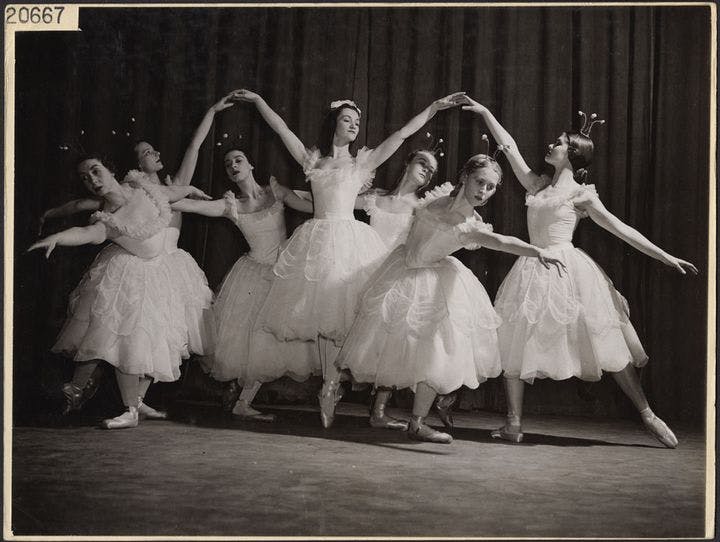Winter 2011
The Death of Dance
– The Wilson Quarterly
The dance world is crumbling, and young dancers are training for a profession that grows smaller and less significant by the year.
Only a few decades ago, Mikhail Baryshnikov and Rudolf Nureyev graced the covers of national magazines. Today, dancers and choreographers find that even a steady income, let alone this degree of fame, is nearly impossible to attain. According to Sara Hamdan, herself a former dancer, “the dance world is crumbling, and young dancers . . . are training for a profession that grows smaller and less significant by the year.”
Dance has fallen out of favor with the public, especially younger audiences. Ballet attendance dropped by a third between 1982 and 2008 and by nearly half among those 18 to 24.
Dance demands a lot of its audience—it’s not an iPod experience. The legacies of the innovative choreographers who turned dance into “a cultural sensation” in the 20th century are now at risk. The Paul Taylor Dance Company, for example, stages about half as many shows today as it did in 2008 and earns fees that are much less than those it received not long ago. The New York City Ballet has laid off dancers, reduced staff salaries, and initiated a hiring freeze, but still has a large deficit.
The only way dance will recover is by finding a way to appeal to young people, Hamdan says. Tough customers, they hold an idea of dance that reflects what they see on videos and television—dance as competition or as a display of pure physical talent. Ballet and modern dance have traditionally concerned themselves with conveying meaningful narratives, and dance companies are reluctant to experiment. Instead, they pour money into restoring marble lobbies and proscenium arches—not a shrewd way to attract people who are put off by the expense and formality of dance.
Trained dancers find themselves in a difficult situation as companies continue to close, leaving a large number of talented dancers competing for a shrinking number of positions. Much like journalism schools, dance schools have continued to churn out trained professionals despite the field’s decline. Even those dancers with paying work usually need to take on other jobs to pay their bills. Younger dancers find themselves vying against veterans for positions with minor companies. The traditional system of handing down knowledge from one dance generation to the next is breaking down. “Slowly but surely,” Hamdan notes, “a career path is fading away.”
* * *
The Source: "Last Rites" by Sara Hamdam, in First Things, August-September 2010.
Photo courtesy of Flickr/BiblioArchives
